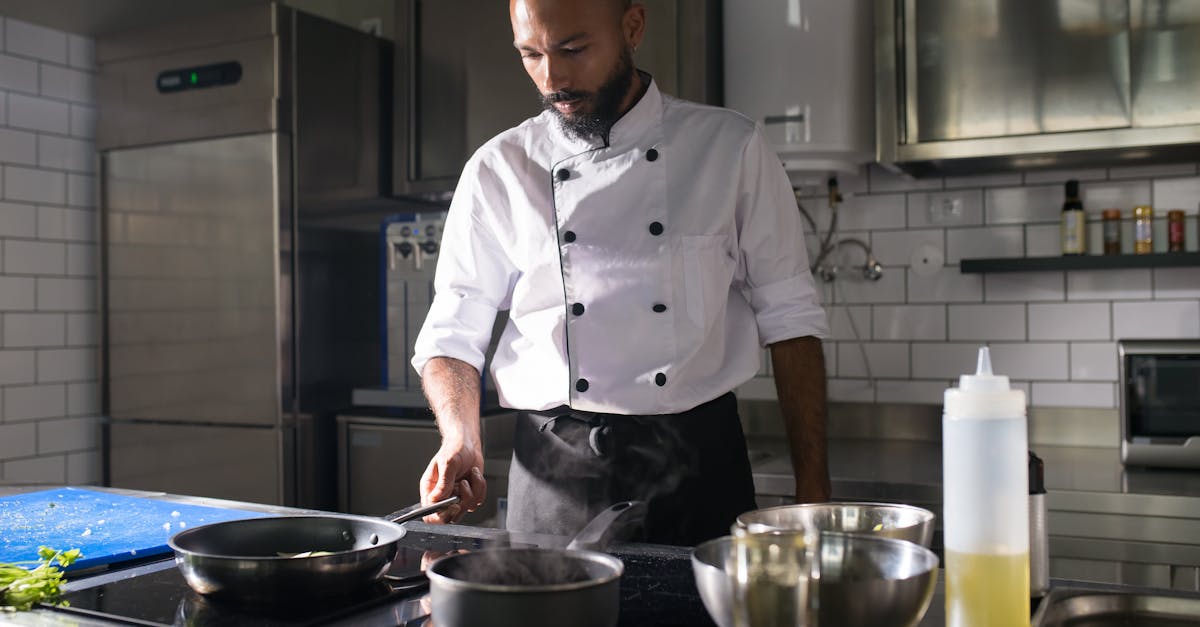
Introduction to Culinary Innovation
Culinary innovation is reshaping the way we perceive and enjoy food, intertwining tradition with cutting-edge trends. Bringing together avant-garde techniques and sustainable practices, it’s a realm where science meets artistry. From edible 3D-printed creations to eco-friendly gourmet meals, culinary innovation seeks to challenge palates and perceptions. The landscape of gastronomy is witnessing a transformative phase, with chefs becoming torchbearers of this evolution. Spanning from farm-to-table movements to hyper-personalized dining experiences, these innovations redefine culinary boundaries. Through this exploration, we delve into how these new approaches are revolutionizing the culinary world.
Embracing Technology in the Kitchen
Incorporating technology into culinary practices has been a game-changer, offering chefs unprecedented opportunities for creativity. With the rise of smart kitchens, culinary experts utilize gadgets like precision cookers, digital thermometers, and induction stoves for precise cooking. 3D food printing, a relatively new innovation, allows chefs to experiment with form and flavor, pushing the limits of creativity. Furthermore, artificial intelligence assists in recipe development, analyzing flavor profiles and suggesting novel combinations. This convergence of technology and cooking artistry empowers chefs to create dishes that are not only visually stunning but also impeccably balanced in taste.
Sustainability as a Driving Force
The drive towards sustainable gastronomy is shaping today's culinary landscape, advocating for eco-friendly cooking methods. For many chefs, sustainability isn’t merely a trend but a responsibility that influences ingredient sourcing and menu planning. Farm-to-table practices reduce carbon footprints, promoting locally sourced seasonal ingredients. Meanwhile, zero-waste cooking ensures that every part of the ingredient is utilized, minimizing food wastage. Eco-conscious packaging and biodegradable utensils reflect a commitment to preserving the environment. As diners become increasingly aware of their ecological impact, the demand for sustainable culinary practices continues to grow, placing responsibility at the forefront of innovation.
Molecular Gastronomy: A Scientific Approach
Molecular gastronomy bridges the gap between science and cooking, transforming the culinary experience into an experimental adventure. It embraces techniques such as spherification, edible foams, and liquid nitrogen cooling to create dishes that defy traditional expectations. By altering textures and forms, chefs invite diners to reimagine familiar flavors in unfamiliar contexts, sparking curiosity and delight. This scientific approach helps enhance flavors, preserve nutrients, and achieve precision in cooking. Though initially met with skepticism, molecular gastronomy has carved a niche within the culinary world, emphasizing that food is both a substance to be savored and a concept to be explored.
The Art of Vegan and Plant-Based Cuisine
In recent years, plant-based diets have transformed from niche interest to mainstream, leading to remarkable culinary innovations. Chefs experiment with diverse plant-based ingredients, devising dishes that cater not only to vegans but also to those seeking healthier and ethical alternatives. By utilizing innovative cooking techniques, chefs craft plant-based meat and dairy substitutes that mimic their conventional counterparts in taste and texture. The creativity involved in transforming vegetables, grains, and legumes into gourmet delights demonstrates plant-based cuisine's potential. This movement not only satisfies the palate but also addresses concerns surrounding animal welfare and environmental sustainability.
Hyper-Personalized Dining Experiences
The demand for personalized dining experiences is steering culinary innovation towards customization and individual preferences. Through technology, chefs and restaurateurs analyze consumer data to create tailor-made culinary adventures that cater to personal tastes and dietary restrictions. Augmented reality (AR) and virtual reality (VR) further enhance these experiences, immersing diners into themed culinary journeys that extend beyond the plate. Interactive menus and AI-driven recommendation systems curate unique dining experiences. This hyper-personalization trend underscores a shift in culinary philosophy, where every meal is carefully curated to elevate individual dining encounters.
Culinary Storytelling: Weaving Narratives Through Food
With culinary storytelling, chefs infuse narratives into their dishes, creating multisensory experiences that connect diners to cultures, traditions, and artistry. Each course is meticulously designed to convey a story, often intertwined with the chef's personal history or cultural heritage. Elements like plating, color, and texture contribute to this narrative, ensuring that each dish is imbued with meaning beyond mere sustenance. Food becomes the medium through which stories are told, memories are evoked, and emotions are stirred. This orchestrated dining approach not only satiates the appetite but also nourishes the mind and soul by engaging diners on multiple levels.
Fusion Cuisine and Globalization
Global culinary exchanges and cultural amalgamations are giving rise to fusion cuisine, where diverse culinary traditions converge on a single plate. Chefs integrate elements from various national cuisines, blending flavors and techniques to craft innovative dishes that pay homage to global diversity. This approach invites diners to embark on a gastronomic journey around the world, sampling a mosaic of flavors within a single dish. Fusion cuisine celebrates globalization by highlighting the rich tapestry of cultural influences while fostering an appreciation for different culinary traditions. It exemplifies the creativity and adaptability that define culinary innovation in the modern era.
Challenges in Culinary Innovation
Despite its progress, the path to culinary innovation isn't devoid of challenges. Navigating food safety regulations and ensuring ingredient availability can pose hurdles for trailblazing chefs. Adopting novel techniques requires extensive training and understanding, sometimes alienating traditionalists within the culinary community. Balancing innovation with the risk of alienating diners unfamiliar with avant-garde approaches is an ongoing challenge. Additionally, maintaining affordability and accessibility while delivering gourmet experiences remains an objective. The courage to explore uncharted territories and continuously adapt ensures that culinary innovation remains an evolving field with exciting possibilities.
A Tantalizing Future of Culinary Innovation
The world of culinary innovation stands at a fascinating juncture, driven by technology, sustainability, and creativity. As chefs push boundaries to redefine modern cuisine, culinary artistry continues to evolve rapidly. Embracing challenges and opportunities alike, today’s culinary pioneers set the stage for gourmet experiences of tomorrow. These innovations reflect a harmonious blend of tradition and modernity, promising delightful experiences that engage all senses. The unyielding passion for culinary exploration ensures a thriving culinary future, where every dining experience becomes a thrilling adventure into the world of flavor and creativity.